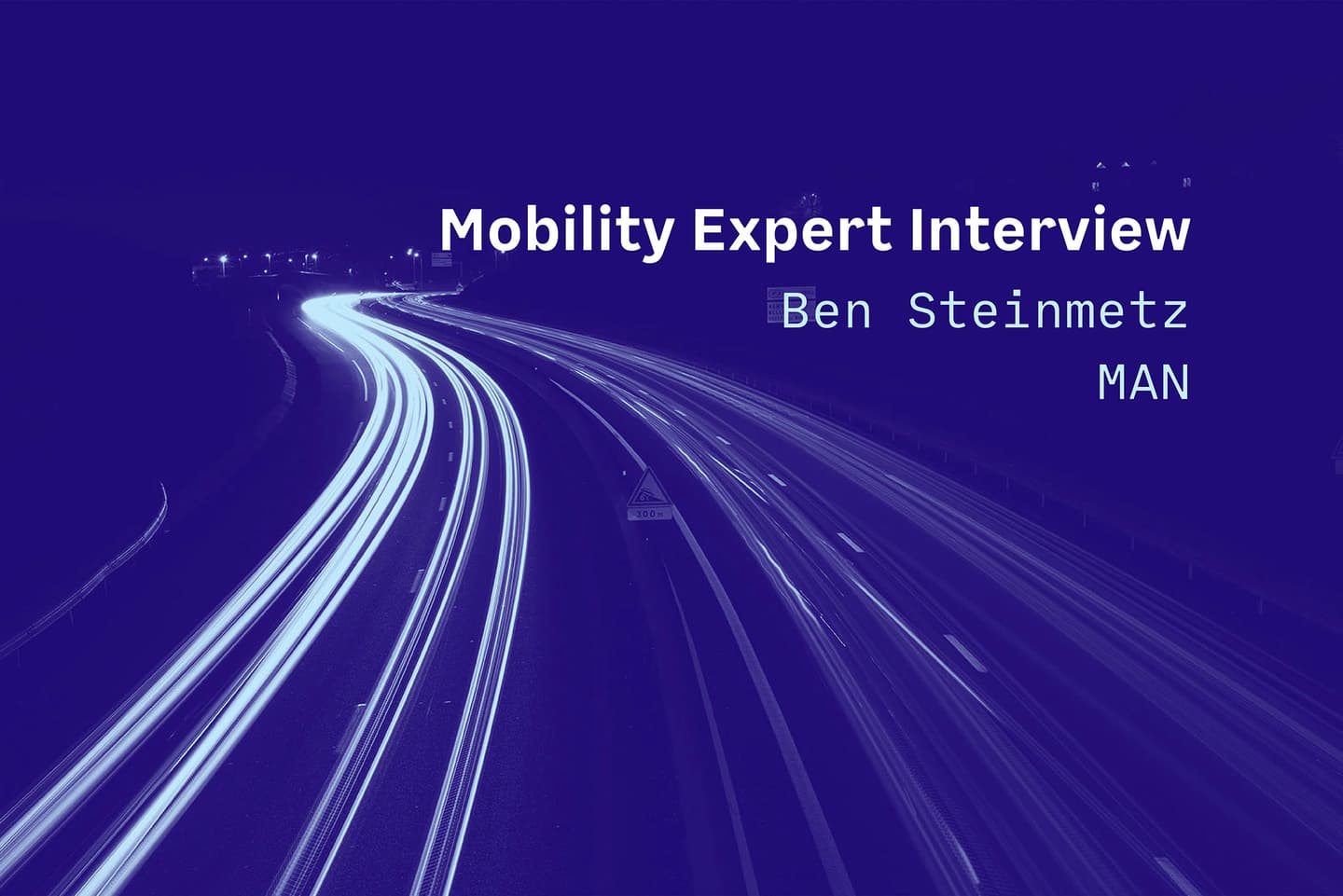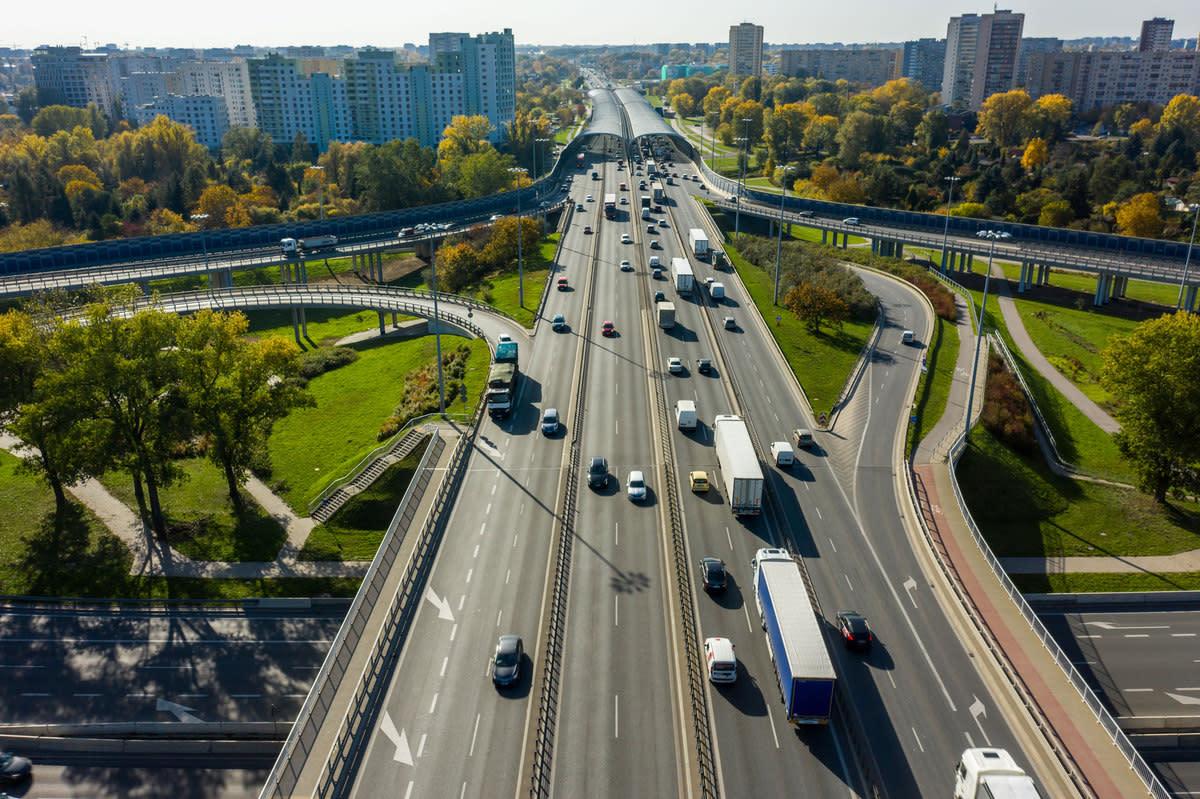Interview with Mobility Expert Ben Steinmetz, MAN
As Product Strategist and Lead Mentor at MAN Impact Accelerator, Ben Steinmetz is committed to transforming MAN beyond OEM to be ready for a digital and automated future. Focused on innovating business models and customer-oriented solutions to clear the path for an autonomous driving strategy for busses, Ben talks about trends, technologies, data strategies and other opportunities in the field of urban mobility - now and in the future.

Looking at the ongoing changes in urban mobility, which trends and misconceptions do you observe?
Talking about trends, it’s seamless mobility, which is the combined consequence of other trends. There’s sharing-economy, that leads to fewer cars in cities and requires alternative forms of transport. Trends like neo-ecology and holistic-health lead to an increase in walking and biking in the cities, taking modal share splits from all other forms of transport.
When we talk about public transport, in particular, it’s a whole new set of prerequisites. Ever since its existence, public transport has been the mode of transport for people, who were too poor to afford a car. You might say it was a binary system – car or bus. For a decade, public transport became the mode of choice for more and more wealthy customers with new needs and other forms of mobility appeared. The binary system changed to a multi-system. Ultimately, public transport needs to adapt to the new circumstances and needs to find its role – which is very exciting to observe.
The biggest misconception for me is to call it urban mobility. If you want to solve the traffic problems in cities you need to include rural areas. Especially in Germany, we’re a country of commuters. Also, urban mobility shouldn’t be a totally free market. To create an urban mobility ecosystem, which improves the individual transport experience and the traffic in cities, we will need holistic planning and solutions. The role model for such a system is Transport for London and the Jelbi App in Berlin.
As we look further into the future, there’s always the picture of small autonomous pods, rolling around green cities. I hope the part with the green cities will happen but I’m pretty sure, we won’t roll around in small autonomous pods. Not because of technology, but because of the simple fact, that the infrastructure can’t handle the necessary amount of vehicles (OECD study). Mass transit will always be part of Urban Mobility.
Where do you personally see the biggest opportunities around urban mobility?
Business-wise, it’s the platform to bring together different forms of mobility and combine them to a passenger-centric and flexible offer which is a real alternative to cars for all the people with different needs and wishes. But such a platform consists of different building blocks and I’m sure not all of these blocks will be handled by one company. You need the data to understand the demand, which can change with a pretty high frequency and other influences on the mobility system. The second block is the intelligence to get the right results out of this data and draw the right conclusion for all the forms of mobility services. Finally, the mobility services itself. These are the main building blocks and opportunities but there are much smaller building blocks, like payment platforms and so on.
Which technologies do you see as the most important ones in the future of mobility ecosystems?
Although autonomous driving isn’t coming as fast as most people expected a few years ago, it’s a game-changer. Its influence on operating costs in transport is unrivaled to any transport technology ever developed. It enables a whole set of new mobility offers with a passenger-friendly price structure. Still, autonomous driving will take years to be ready, we will see highly automated systems in the near future as it can already influence the operating costs structure a lot.
Digitalization will be necessary to build an efficient transport offer. The complexity of a sophisticated urban mobility system can't be handled by humans. The amount and frequency of factors influencing the system are simply too high.
What role do ecosystems play in urban mobility?
It’s a crucial one. Especially when we talk about a system with different forms of mobility. I’m pretty sure no company can handle the assets, the software, the infrastructure and the know-how by itself. And let’s not forget the cities themselves who become more and more aware of their responsibility to regulate and influence the mobility in the cities. As an example for the complexity, let’s take a look at car-sharing, which is only one form of mobility in a mobility ecosystem. With the fusion of Car2Go and DriveNow, two big rivals joined forces to master one part of the mobility ecosystem.
What elements do you think are essential when creating a mobility service or ecosystem?
The most important point is the understanding of the existing ecosystem and the competitive landscape. To understand if your service can improve the overall mobility landscape or if you’re just another bike-sharing company when there's already enough bikes on the street. You need to identify the white spots in the existing mobility ecosystem and solve them. That’s where you will easily attract customers and contribute sustainably to the mobility ecosystem. Additionally, you will need a holistic frontend to the customer with all mobility services in one platform to enable the customer to easily create the optimal mobility offer for his need - with a simple price structure. Then you need the necessary data to offer a mobility service, where and how it’s needed, for example for demand prediction and the infrastructure to offer a seamless experience that can compete with the individual car, e.g. extra lanes, elderly-friendly stops, or a dense network.
How do you experience customer needs in the changing landscape of urban mobility?
Compared to 10 or 20 years ago, the customer structure has changed a lot. People want solutions that are tailored to their preferences because they are used to it from other areas in their lives. They want options that fit their current situations. Sometimes they are more price-sensitive, sometimes it’s time that matters, sometimes comfort. Due to an aging society, urban mobility needs to become more barrier-free and in general elderly-friendly – especially when it comes to new mobility services, the inclusion of elderly and non-digital people is forgotten a lot.
Do you see big differences in urban and more rural areas?
While urban areas are the battlefield for most of the new mobility services, rural areas are left out. Due to the low density of rural areas, they are not interesting for mobility services. You would need many more vehicles or more empty driven kilometers to serve a rural area, than in an urban area. That’s simply not a good business case for private companies therefore it’s left to public transport. Nevertheless, rural areas are crucial for solving traffic problems in the city. Because a lot of traffic in the city is caused by commuters coming into the city by car. As to the higher distances in rural areas, there’s no real alternative to a car.
How does data change the urban mobility game?
Data is crucial for urban mobility. And there’s a lot of data generated out there every day: There’s data about infrastructure, movement data, weather, disruptions, mobility services, events and so on. Unfortunately, most of the data isn’t analyzed or used properly yet, as it is scattered across different players. Or it is not even generated, as most of the players still don’t like to share their data. That’s a pity, because data can help you to understand the ecosystem and only when you start to understand the complete system, it is a real game-changer for urban mobility. The Open-Data-Platform by Transport for London is a good example for how a data-sharing platform could and should look like: when all mobility players understand their ecosystem, they can contribute to better mobility.
What is key for building a data-based mobility service?
Cooperation or even coopetition. Urban mobility is a complex system with a lot of influences. Most companies don’t have all the necessary data to build and run a good mobility service. But to get data you also need to give some of your data and that’s where most companies struggle. Therefore, always question the data you have and the way you use it. The data itself can change fast and also the prerequisites for your business. It is key to use your data, not only to steer your operations but also to inform your customers. The information of a delay only isn’t satisfying to a customer. However, when you inform him why there’s a delay and show him alternatives, the customer experience of the situation is less negative.
What role does data play in your current decision making?
I use vehicle data – especially when it’s about the requirements for development. The data helps me to understand how the customers are using their vehicles in their daily operations. This enables me to optimize the vehicles towards the customers' needs. When it comes to e-mobility, data is even more crucial. It’s a relatively new technology with some restrictions, e.g. the range. More batteries mean more range, but less transport capacity and vice versa. By understanding how the customers use the vehicles we can optimize the system towards the customer's needs.
Talking about urban mobility ecosystems - how do companies need to adapt to be ready for future changes?
I believe that mobility companies need to stop trying to do everything on their own and start to see themselves as part of something bigger – cooperation and coopetition is key. Companies need to get faster and more flexible to adapt to changing situations and demands and perhaps a bit more adventurous to try out new things.
About Ben Steinmetz

Ben is a Product Strategist at MAN Truck & Bus SE, where he creates new business models and works on the strategy for autonomous driving in the context of people transport. He has a strong focus on the role of public transport in urban mobility. After his Master in Systems Engineering, he started at MAN as a Graduate Trainee in Engineering and afterwards developed the electric city bus before he switched to product strategy.
About MAN Truck & Bus SE
MAN Truck & Bus is one of Europe's leading commercial vehicle manufacturers and transport solution providers, with an annual revenue of some 11 billion euros (2019). The company's product portfolio includes vans, trucks, buses/coaches and diesel and gas engines along with services related to passenger and cargo transport. MAN Truck & Bus is a company of TRATON SE.
Sources: OECD Study (2015). URBAN MOBILITY SYSTEM UPGRADE.
Transport for London (2020). Open data.
To learn more about our mobility approach, check out our mobility page.
 Yannick EngelDirector, Strategy & Innovation
Yannick EngelDirector, Strategy & Innovation

